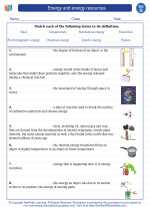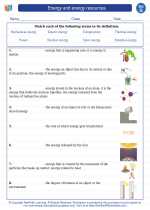Translational Motion
Translational motion is the movement of an object from one place to another. It involves the change in position of an object over time. This type of motion is commonly observed in everyday life, such as the movement of a car along a road or a person walking down the street.
Key Concepts
- Distance and Displacement: Distance is the total length of the path traveled by an object, while displacement is the straight-line distance between the initial and final positions of the object.
- Speed and Velocity: Speed is the rate of change of distance with respect to time, while velocity is the rate of change of displacement with respect to time. Velocity includes both the speed and the direction of motion.
- Acceleration: Acceleration is the rate of change of velocity with respect to time. It can be a change in speed, direction, or both.
Formulas
Here are some important formulas related to translational motion:
Distance: \( \text{Distance} = \text{Speed} \times \text{Time} \)
Displacement: \( \text{Displacement} = \text{Final Position} - \text{Initial Position} \)
Speed: \( \text{Speed} = \frac{\text{Distance}}{\text{Time}} \)
Velocity: \( \text{Velocity} = \frac{\text{Displacement}}{\text{Time}} \)
Acceleration: \( \text{Acceleration} = \frac{\text{Change in Velocity}}{\text{Time}} \)
Study Guide
When studying translational motion, it's important to understand the difference between distance and displacement, as well as speed and velocity. Practice using the formulas for calculating distance, displacement, speed, velocity, and acceleration. Work on problems that involve finding the total distance traveled, the displacement of an object, and the average speed or velocity. Additionally, make sure to understand the concept of acceleration and how it affects an object's motion.
It can also be helpful to visualize translational motion using graphs, such as distance-time graphs and velocity-time graphs. These graphs can provide valuable insights into an object's motion and help in understanding the relationships between distance, displacement, speed, velocity, and acceleration.
Lastly, familiarize yourself with real-world examples of translational motion and how the principles of motion apply to everyday situations. Observing and analyzing the motion of objects in your surroundings can deepen your understanding of translational motion.
Remember to practice solving problems and applying the concepts to different scenarios to reinforce your understanding of translational motion.
.





